“Shirley” is a novel by Charlotte Brontë. Published in 1849, diverges from Brontë’s other works, as it integrates elements of social criticism with a strong narrative. Set during the industrial depression, the story vividly portrays the struggles faced by the working class. Moreover, it introduces a strong female character, Shirley, who embodies independence and the spirit of change. Let’s take a deeper dive into the novel.
Short Summary of “Shirley”
In a Yorkshire village grappling with industrial depression, the community is pushed to the brink as mill owner Robert Moore introduces machinery that threatens local livelihoods. At the same time, young Caroline Helstone quietly pines for Robert, feeling increasingly isolated as her love seems unrequited. As tensions mount, the vibrant and assertive Shirley Keeldar emerges as a figure of hope in the bleak village, forming a strong bond with Caroline as they navigate their personal trials.
As the narrative unfolds, Shirley’s affection for Louis, Robert’s brother, comes to light, paralleling the deepening connection between Caroline and Robert. As Caroline’s health wanes under the strain of unrequited love and isolation, a timely realization from Robert brings reconciliation and mutual affection to the forefront. The novel culminates in a double wedding, symbolizing the restoration of harmony and the rejuvenating power of love and friendship within the community.
Comprehensive Synopsis of “Shirley”
Setting the Stage: Industrial Unrest and Economic Challenges
In this initial stage, readers are immersed in the grim realities of the Yorkshire village, a place beleaguered by industrial depression. Robert Moore, a driven yet somewhat insensitive mill owner, is at the center of the community’s unrest. His decision to introduce machinery in his mill incites anger and fear among the local workers, who see this as a direct threat to their livelihoods. Parallelly, we are introduced to Caroline Helstone, a young woman grappling with her own personal dilemmas, including her growing affection for Robert, which seems to be a one-sided affair at this point.
Shirley: A Breath of Fresh Air
As the narrative unfolds, Shirley Keeldar enters, bringing a vibrant and refreshing energy to the otherwise gloomy village. She is a wealthy heiress with a strong, independent spirit, challenging the traditional gender roles of the time. Her friendship with Caroline blossoms, offering readers a glimpse into a supportive and empowering female friendship that stands as a beacon of hope amidst the surrounding chaos.
Emotional Turmoil and Developing Relationships
This stage delves deeper into the emotional intricacies of the central characters. Caroline’s love for Robert becomes a central plot point, causing her much distress as she fears her feelings remain unreciprocated. Meanwhile, Shirley finds herself drawn to Louis Moore, Robert’s intellectual yet underappreciated brother. The narrative intricately explores the dynamics of these relationships, offering a rich tapestry of love, friendship, and personal growth.
Crisis and Awakening: A Turning Point
As the story progresses, Caroline’s health takes a significant hit, reflecting her inner turmoil and unfulfilled desires. This crisis acts as a catalyst, bringing about a series of realizations and awakenings among the characters. Robert, in particular, undergoes a transformation, as he begins to recognize the depth of his feelings for Caroline, setting the stage for potential reconciliation and newfound understanding.
Coming Together: Resolutions and New Beginnings
In this penultimate stage, the narrative threads begin to converge towards a resolution. Shirley and Louis’ relationship blossoms into a deep and mutual affection, culminating in a marriage proposal. Simultaneously, Robert and Caroline find their way back to each other, mending their relationship and looking forward to a future together. This stage signifies a shift from turmoil and uncertainty to hope and new beginnings, as the characters find solace and happiness in each other.
Harmonious Conclusion: Unity and Celebration
In the final stage of the novel, the community comes together in a grand celebration of love and unity. The narrative culminates in a joyous double wedding, symbolizing the harmonious coming together of different strands of the community. This conclusion not only marks the personal happiness of the central characters but also signifies a hopeful future for the village as a whole, showcasing the healing and transformative power of love, friendship, and community solidarity.
Summarized Info About The Novel
- Title of the work: Shirley
- Author: Charlotte Brontë
- Main Character(s): The primary characters are Shirley Keeldar, a wealthy and independent woman, and Caroline Helstone, a young woman grappling with love and societal expectations.
- Date of Publication: October 1849
- Original Language: English
- Genre: Social Novel
- Length: The novel is substantial, usually spanning over 500 pages in most editions.
- Form and Structure: The narrative progresses linearly, guided by a third-person omniscient narrator, which allows for a detailed exploration of the characters’ inner thoughts and the unfolding events.
- Setting: The story unfolds in a Yorkshire village during the period of industrial depression, vividly portraying the societal challenges and shifts of that time.
- Themes: The novel explores several central themes including the impacts of industrialization on society, the changing roles of women, class struggles, and the healing power of love and friendship.
- Publication Medium: Initially published as a standalone volume, it was released under Brontë’s pseudonym, Currer Bell.
- Diction: Brontë utilizes a formal and somewhat archaic style of diction, in line with the literary norms of the period. The narrative features a rich and varied vocabulary, crafting detailed and vivid portrayals of characters and settings. Additionally, the inclusion of dialectical elements adds depth and realism to the depiction of the community.
Characters Breakdown
Caroline Helstone
- Personality: Caroline is a gentle and introspective young woman, known for her kindness and empathy.
- Age: In her early twenties.
- Gender: Female.
- Role in the Story: She serves as one of the central characters, representing the traditional expectations placed upon women during that time period.
- Character Arc: Throughout the novel, Caroline undergoes a significant transformation, evolving from a vulnerable and somewhat passive figure to a woman who finds her happiness and fulfillment, particularly in love.
- Additional Information: Caroline faces a series of personal conflicts, including her unrequited love for Robert Moore and a health crisis spurred by emotional distress. Her journey is marked by personal growth, as she learns to navigate the complexities of love and societal expectations.
Shirley Keeldar
- Personality: Shirley is a vibrant and independent individual, characterized by her strong will and progressive views on gender roles.
- Age: In her mid-to-late twenties.
- Gender: Female.
- Role in the Story: Shirley serves as a beacon of change in the community, challenging traditional norms and fostering a sense of hope and renewal.
- Character Arc: Shirley’s journey is marked by her pursuit of love and happiness, which she finds in her relationship with Louis Moore, showcasing a successful blend of love and mutual respect.
- Additional Information: Shirley’s entrance into the community brings a fresh perspective and energy, particularly in her friendship with Caroline, where she offers support and empowerment. Her relationship with Louis Moore also highlights a more modern and egalitarian approach to love and marriage.
Robert Moore
- Personality: Robert is ambitious and somewhat stern, initially focused more on his business endeavors than personal relationships.
- Age: Late twenties to early thirties.
- Gender: Male.
- Role in the Story: As a mill owner, he represents the industrialization wave sweeping through the society, often finding himself at odds with the local workers due to his modernization efforts.
- Character Arc: Robert’s character undergoes a transformation, where he moves from being somewhat insensitive to becoming more aware of his feelings and the needs of others, particularly in his relationship with Caroline.
- Additional Information: Robert’s journey is marked by conflicts, both within the community due to his business decisions and personally, as he navigates his growing affection for Caroline. His eventual realization and reconciliation with Caroline signify personal growth and a shift towards a more balanced life.
Louis Moore
- Personality: Louis is an intellectual and somewhat reserved individual, often displaying a depth of understanding and sensitivity.
- Age: Late twenties.
- Gender: Male.
- Role in the Story: Louis serves as a tutor, often overshadowed by his brother’s dominant personality, yet offering a contrasting representation of masculinity that is more thoughtful and sensitive.
- Character Arc: Louis experiences personal growth through his relationship with Shirley, moving from a position of reservation to finding happiness and fulfillment in love.
- Additional Information: Louis’ relationship with Shirley showcases a partnership based on mutual respect and equality, offering a modern and progressive depiction of love and marriage during that time period. His character serves as a counterpoint to his brother, showcasing a different, more sensitive approach to life and relationships.
Reverend Helstone
- Personality: Reverend Helstone, Caroline’s uncle, is a stern and somewhat rigid individual, embodying the traditional values of the society at that time.
- Age: Middle-aged to elderly.
- Gender: Male.
- Role in the Story: He serves as a guardian to Caroline, and his conservative views often clash with the changing ideologies represented by other characters in the novel.
- Character Arc: Throughout the novel, his character doesn’t undergo a significant transformation, but he serves as a representation of the older generation clinging to established norms.
- Additional Information: His interactions with Caroline and other characters often highlight the generational gap and the shifting societal dynamics of that period.
Hortense Moore
- Personality: Hortense, Robert’s sister, is a strong-willed and principled woman, albeit with a rigid adherence to traditional values.
- Age: Likely in her thirties.
- Gender: Female.
- Role in the Story: She serves as a supporting character, often providing a contrast to the more progressive views of characters like Shirley.
- Character Arc: Her character remains relatively constant throughout the narrative, representing the traditionalist perspective in the evolving society.
- Additional Information: Hortense’s interactions with other characters, particularly Shirley, offer insights into the changing perceptions of women’s roles during that period.
Joe Scott
- Personality: Joe Scott is a loyal and hardworking individual, serving as the overseer at Robert Moore’s mill.
- Age: Middle-aged.
- Gender: Male.
- Role in the Story: His role is significant in showcasing the worker-owner dynamics of the industrial era, often acting as a mediator between Robert and the mill workers.
- Character Arc: Joe Scott maintains a relatively steady character arc, embodying loyalty and dedication to his work.
- Additional Information: His character offers a glimpse into the lives of the working class during the industrial revolution, highlighting the challenges and tensions that arose due to mechanization and changing labor dynamics.
Context of “Shirley”
The creation of “Shirley” was significantly influenced by a myriad of historical, personal, and cultural contexts that were prevalent during the time Charlotte Brontë was writing. Here’s a detailed breakdown:
Historical Context
Industrial Revolution: The novel is set against the backdrop of the industrial revolution in England, a period marked by rapid industrialization and technological advancements. The introduction of machinery in mills, depicted through Robert Moore’s character, was a real phenomenon that drastically changed the labor market and stirred social unrest.
Luddite Movement: The early 19th century witnessed the Luddite movement, where workers protested against job losses due to the mechanization of production processes. This movement is vividly portrayed in the novel, showcasing the tensions and conflicts between mill owners and workers.
Personal Context
Brontë’s Family Experiences: Charlotte Brontë’s personal experiences significantly influenced the creation of “Shirley”. The loss of her siblings and the struggles she witnessed in her family might have contributed to the depth of emotional narratives in the book.
Pseudonym Usage: Like her other works, “Shirley” was initially published under the male pseudonym Currer Bell. This decision was influenced by the gender biases of the time, where female authors often used male pen names to ensure their works were taken seriously.
Cultural Context
Changing Gender Roles: The novel reflects the changing gender roles of the time. Shirley’s character, in particular, embodies the shifting perceptions of women’s roles in society, showcasing a strong, independent, and modern woman, which was quite progressive for the time.
Religious Influences: The character of Reverend Helstone and the depiction of the church in the novel reflect the significant role religion played in society during that period. The church was a central institution, influencing various aspects of daily life and societal norms.
Setting of the Work
Yorkshire Village: The novel is set in a Yorkshire village, a setting familiar to Brontë, as she grew up in the Yorkshire region. This setting serves as a microcosm to explore broader societal changes and challenges of the time.
Industrial Depression Era: The time period depicted in the novel is the industrial depression era, a time marked by economic hardships and societal upheavals, offering a gritty and realistic portrayal of the struggles faced by different sections of society.
Relevant Events
Napoleonic Wars: The broader historical context of the Napoleonic Wars also influences the narrative, with references to the economic and social impacts of the wars on English society.
Social Reforms: The period was also marked by various social reforms, aiming to address the societal inequalities and challenges brought about by rapid industrialization and urbanization.
Reception And Criticism
Upon its release, “Shirley” received a mixed bag of reviews and criticisms. While some praised Brontë’s vivid characterization and the novel’s social commentary, others found fault with its narrative structure and perceived lack of coherence. The character of Shirley was noted for being a departure from the conventional portrayal of women during that time, with critics highlighting her as a strong and independent figure. However, some also criticized the novel for what they perceived as a lack of romantic elements, especially when compared to Brontë’s earlier work, “Jane Eyre“.
Impact on Literature and Society
“Shirley” had a notable impact on both literature and society, particularly in its portrayal of gender roles and industrialization. The novel was one of the first to delve deeply into the social and economic issues brought about by the industrial revolution, offering a critical view of the societal upheavals of the time. Moreover, the character of Shirley Keeldar served as an early example of the feminist literary heroine, challenging the traditional norms and expectations placed upon women. This portrayal of a strong, independent female character contributed to the broader discussion on gender roles and women’s rights, influencing later literary works and societal views on gender.
Comparison with Other Works
When compared to other works by Charlotte Brontë, particularly “Jane Eyre“, “Shirley” stands out for its more explicit social commentary and its focus on a broader range of characters and perspectives. While “Jane Eyre” is primarily a bildungsroman focusing on the personal growth and experiences of a single protagonist, “Shirley” offers a more expansive view of society, delving into the lives and struggles of various characters.
In terms of its place within the broader genre of social novels, “Shirley” can be compared to works such as Elizabeth Gaskell’s “North and South”, which also explores the industrialization and class struggles of the 19th century. Both novels offer a critical view of the societal changes brought about by the industrial revolution, highlighting the tensions and conflicts between different social groups.
Furthermore, “Shirley” also shares thematic elements with other novels of the period that explore the changing roles of women in society, such as George Eliot’s “Middlemarch”. Both novels feature strong female protagonists who challenge the traditional gender norms of their time, offering a critique of the societal expectations placed upon women.
Interesting Facts
- Inception During Grief: Charlotte Brontë began writing “Shirley” while grappling with the death of her three siblings, which deeply influenced the tone and narrative of the novel.
- Character Name Influence: The name “Shirley” was primarily used as a male name before the publication of this novel. Charlotte Brontë’s use of it for her female protagonist played a role in popularizing it as a female name in the years to come.
- Autobiographical Elements: The character of Caroline Helstone is believed to be partially autobiographical, reflecting Charlotte’s own experiences and feelings of isolation and loneliness.
- Depiction of Actual Events: The novel portrays real events from the industrial revolution. For example, Luddite uprisings, where workers protested against the mechanization of mills, a significant issue of that period.
- Critical Reception Over Time: While “Shirley” received mixed reviews upon its initial publication, its critical reception has improved over time, with modern critics appreciating its social commentary and complex characters.
My Review of The Novel
In the shadow of the much-acclaimed “Jane Eyre,” I assert that “Shirley” stands as Charlotte Brontë’s true revolutionary masterpiece, a beacon of early feminist literature that boldly defies the gender norms of its time.
Shirley Keeldar, the protagonist, is not merely a character but a radical symbol of female empowerment, embodying a fierce independence seldom seen in the literature of the 19th century. Through her, Brontë crafts a narrative that is unafraid to critique the societal upheavals and class struggles brought about by the industrial revolution.
Despite its potent social commentary and forward-thinking narrative, “Shirley” remains underrated, often overlooked in literary discussions. This oversight is a glaring misjudgment, failing to acknowledge a novel that not only challenged the status quo but envisioned a world where women could stand as equals, unbound by tradition.
In essence, “Shirley” is not just a novel but a radical manifesto for gender equality and social justice. It deserves far greater recognition and acclaim in the literary canon.
🔥 Was Brontë a genius or a grand deceiver? 🤔 Unleash your wildest takes in the comments! Let’s ignite a literary firestorm! 💥 #DebateShirley

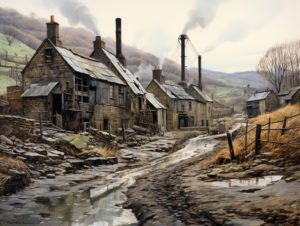

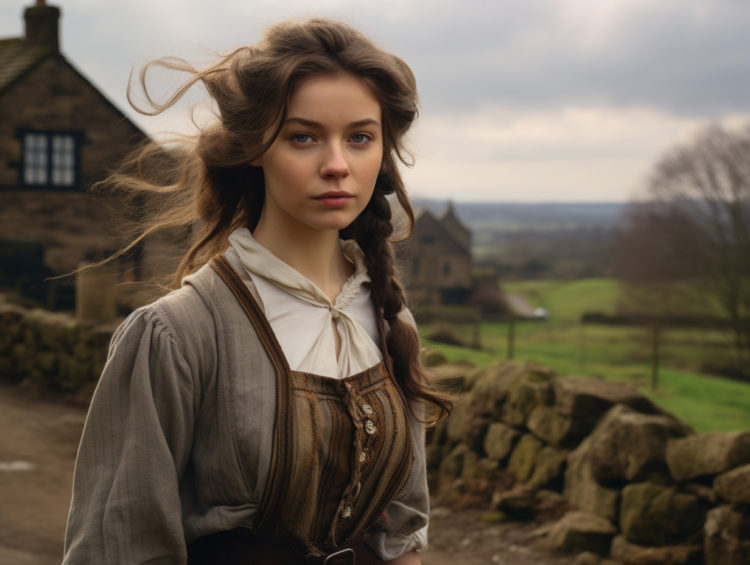
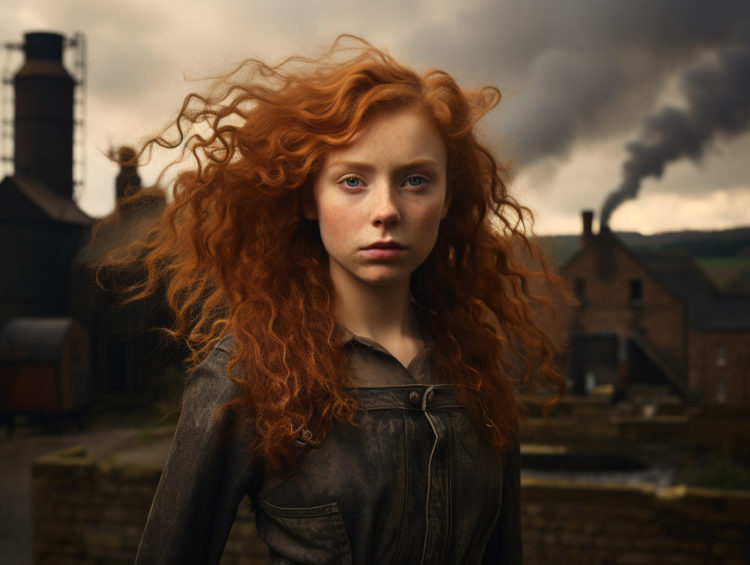
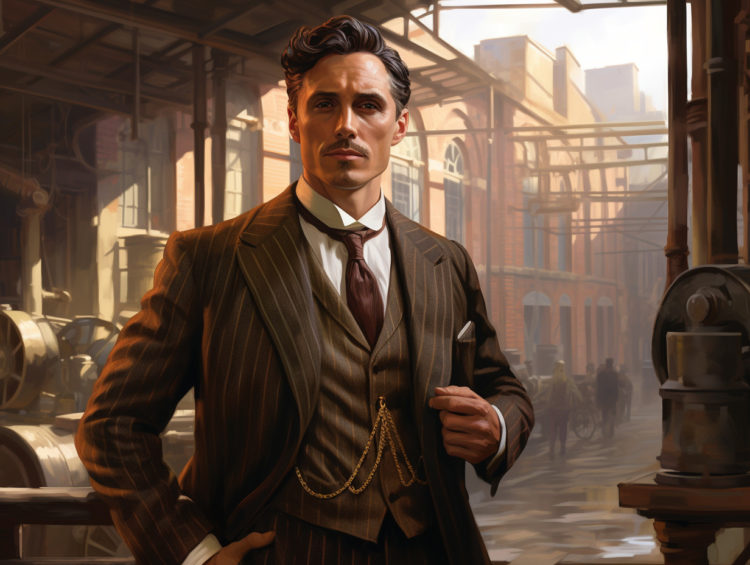

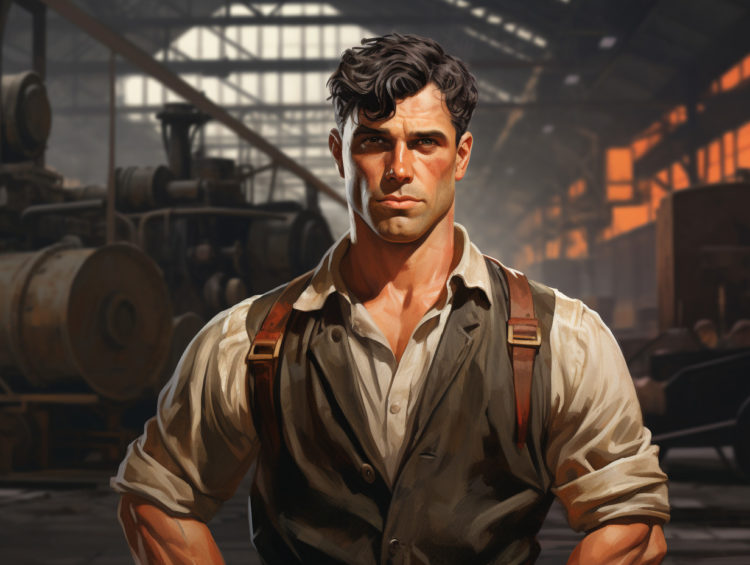
Comments